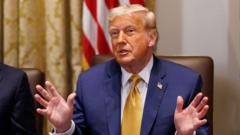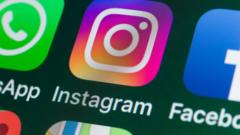Recent cases of artworks being damaged by tourists in renowned European museums highlight the growing concern over visitor behavior, prompting calls for better regulation and awareness.
European Museums on Alert After Tourist Mishaps Impact Priceless Artworks

European Museums on Alert After Tourist Mishaps Impact Priceless Artworks
A series of incidents involving careless tourists at European museums calls attention to the challenges of balancing accessibility and preservation.
A recent incident at the Uffizi Gallery in Florence, Italy, has reignited discussions about the troubling trend of tourist-induced damage to artworks across Europe. On Saturday, a visitor accidentally damaged a centuries-old painting of Ferdinando de’ Medici while attempting to mimic the grand prince's pose for a selfie. This event has amplified concerns voiced by museum directors throughout the continent regarding the surge in selfie-related mishaps within their walls.
Uffizi’s director, Simone Verde, expressed his frustration, stating that the influx of tourists who prioritize social media stunts over appreciation for art is a prevalent issue. This incident follows a similar one this spring at Palazzo Maffei in Verona, where a tourist broke a Swarovski crystal-covered chair while attempting a pose for a photograph.
In response to the growing number of incidents, the staff at the Louvre Museum in Paris recently staged an unauthorized strike, citing overcrowding issues and the distractions caused by selfie-seeking visitors.
Marina Novelli, director of the Sustainable Travel and Tourism Advanced Research Center at Nottingham University, emphasized that such occurrences of travelers damaging cherished artworks are becoming alarmingly frequent. The summer season implies high foot traffic in museums, but this poses a significant challenge as institutions try to strike a balance between attracting tourists seeking social media content and preserving their invaluable collections.
As summer tourism ramps up, European museums are left grappling with how best to manage the consequences of a selfie culture that often neglects the importance of the very art that attracts visitors in the first place.




















